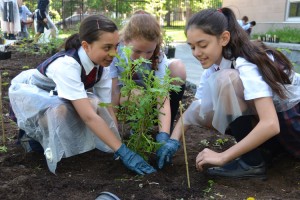 With pollinators like bees and butterflies in dangerous decline and our reliance on them for almost 90 per cent of the world’s plants, a crisis is brewing and LCC students responded with fervor. Last spring, students from grades 3 to 11 literally rolled up their sleeves and got down in the dirt, creating a garden on the LCC grounds to bring back the butterflies.
With pollinators like bees and butterflies in dangerous decline and our reliance on them for almost 90 per cent of the world’s plants, a crisis is brewing and LCC students responded with fervor. Last spring, students from grades 3 to 11 literally rolled up their sleeves and got down in the dirt, creating a garden on the LCC grounds to bring back the butterflies.
The result was not only a garden with a variety of plants to attract pollinators. It was also a beautiful display of milkweed and towering sunflowers that were sure to draw the attention of the artist’s eye. And they did.
Sylvia Tracy’s grade 3 art class had already studied Van Gogh, so a newly planted garden with blooming sunflowers just steps away was serendipitous. “It was a great opportunity to observe the sunflowers and see how they look from up close,” says Ms. Tracy.
The students first did observation drawing, emphasizing the shapes that they saw in the leaves. They were asked to draw what they saw and not rely on any preconceived ideas of how they thought the flower appeared. They learned how to observe, focusing on the texture of the flower, its stem and petals.
In the following class, students turned the drawings into relief prints, recopied the flower onto Styrofoam printing plates and then printed them on different coloured paper. These vibrant creations now adorn the walls of the Junior School hallway. “It’s a wonderful thing to be able to take advantage of nature right here at our school, in the middle of the city,” says Ms. Tracy.
As for the butterfly garden, Jean-François Maurice, Social Science Teacher, is working toward having it recognized with an official certification from monarchwatch.org. “This one project has brought together students from Junior, Middle and Senior School,” he says. “It has served an environmental purpose as well as inspiration for our budding artists. What a success.”

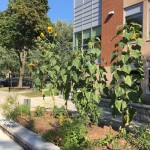
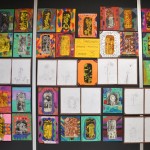
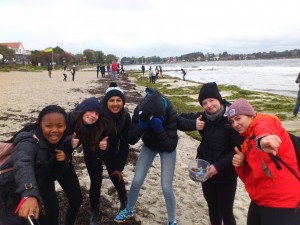 Wednesday was service day at the Round Square International Conference in Louisenlund. I was assigned to a larger group of ~60 delegates, all of whom would be participating in a cleanup of a local beach in the town of Eckernförde, just off the Baltic Sea. When we first arrived, I remarked to a friend that there really wasn’t much to clean: the beach looked spotless!
Wednesday was service day at the Round Square International Conference in Louisenlund. I was assigned to a larger group of ~60 delegates, all of whom would be participating in a cleanup of a local beach in the town of Eckernförde, just off the Baltic Sea. When we first arrived, I remarked to a friend that there really wasn’t much to clean: the beach looked spotless!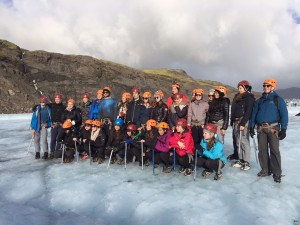 Reporting LIVE from Germany: This is Abby writing on behalf of the entire LCC Round Square Conference Team and sharing with you our adventures encountered during our pre-conference trip to Iceland.
Reporting LIVE from Germany: This is Abby writing on behalf of the entire LCC Round Square Conference Team and sharing with you our adventures encountered during our pre-conference trip to Iceland.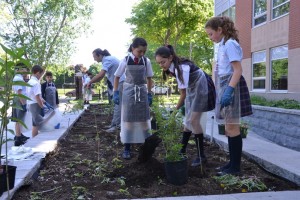 Chaque année, les papillons monarques font un voyage de plus de 5000 km du Canada jusqu’au Mexique. Mais depuis quelques années, les populations de monarques ont atteint un creux historique d’à peine 33,5 millions en 2013, alors que leur moyenne annuelle avait été de 350 millions au cours des 15 dernières années.
Chaque année, les papillons monarques font un voyage de plus de 5000 km du Canada jusqu’au Mexique. Mais depuis quelques années, les populations de monarques ont atteint un creux historique d’à peine 33,5 millions en 2013, alors que leur moyenne annuelle avait été de 350 millions au cours des 15 dernières années.